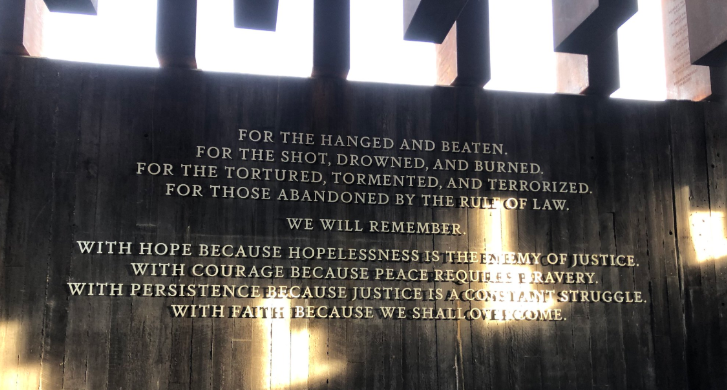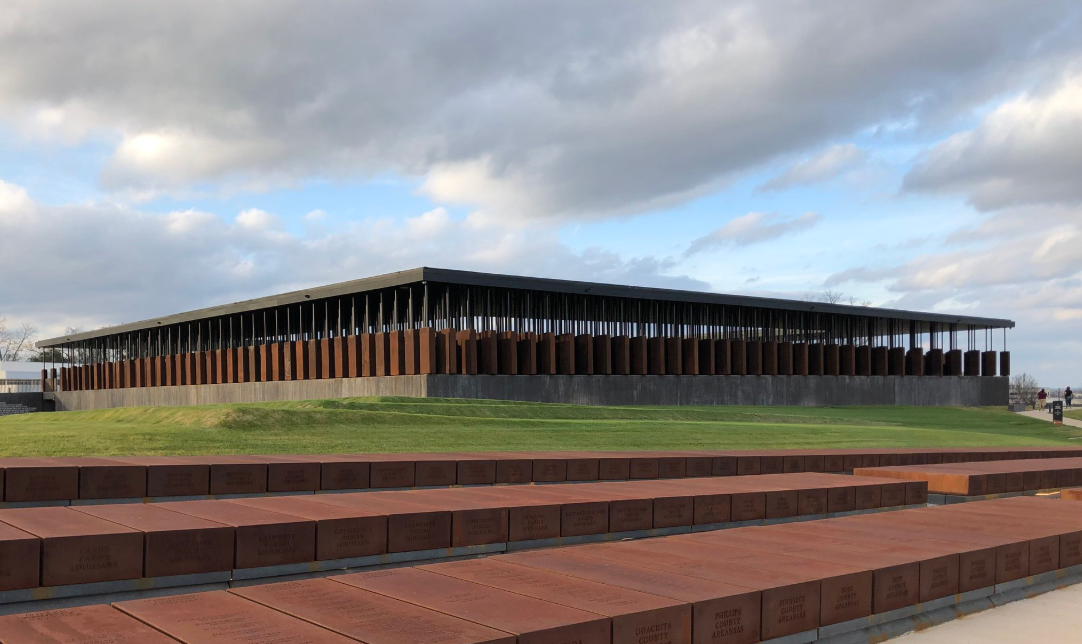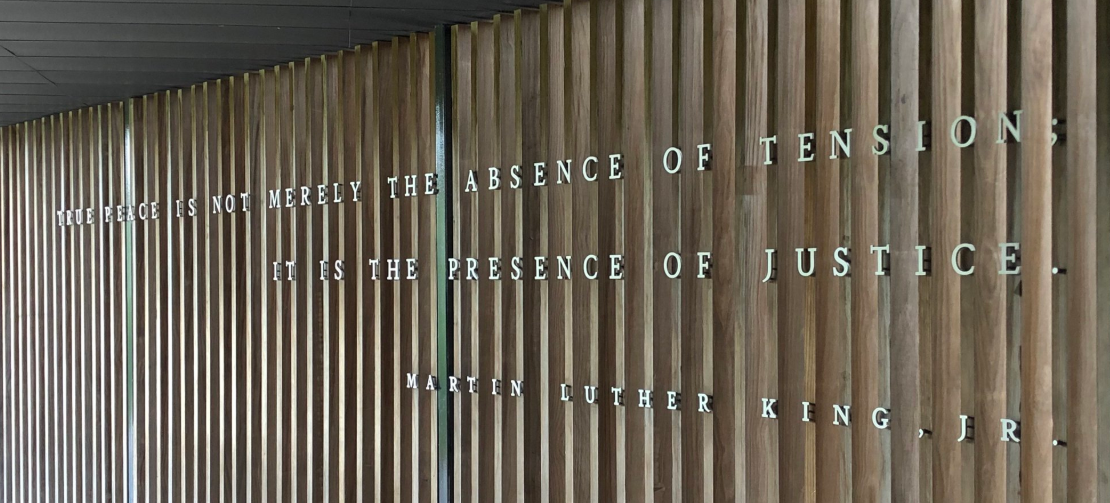Remembering Our History, Understanding Our Legacy and Shaping Our Future
By Brigid Ahern, President and CEO, Turnaround for Children

One year ago, on a six-acre park in Montgomery, Alabama, the National Memorial for Peace and Justice and Legacy Museum opened their doors to the public for the first time. I had the privilege of visiting the Memorial and Museum in February, and since then, I’ve reflected on the time I spent there, immersed in our country’s history of horrific violence towards black and brown people and the legacy of immense trauma that lives on today.
The visual manifestation of the violence towards these communities is something I will never forget. The museum’s presentation of first-hand accounts illustrates how slavery did not end but instead evolved into today’s system of mass incarceration that plagues many black and brown communities and is a reality that we all must collectively reckon with.
Steel slabs hang suspended from the ceiling of the Memorial, etched with the more than four thousand names of lynching victims: Estes Hairston, George Lee, Pat Woods, Benjamin Hart, Unknown… Each slab represents a county where a lynching took place — and there are 800 of them.
Looking back, I recall how incredibly overwhelmed I felt seeing the breadth of violence these communities experienced and continue to experience today. I felt enraged and full of compassion for those of us who carry this trauma. Most of all, I left feeling inspired to commit to acknowledging this truth in a full way by working toward a better future for all of us.

At Turnaround for Children our mission is to translate neuroscientific research into tools and strategies for schools with high concentrations of students impacted by the adversity they experience in their everyday lives, in order to accelerate healthy development and academic achievement. As individuals and as an organization, we have a moral imperative to continue to grapple with a set of difficult truths:
- Not only were many schools never designed for all students, but the education system itself has been a tool of systemic, racist oppression
- In far too many ways, in far too many places, it still is today
- The structural oppression black and brown people face every single day in this country is not confined to our schools
These are facts we must hold on to if we have any hope of making effective change. Until we can fully own what this system was designed to do, we cannot revolutionize it.
I am grateful to work for an organization that acknowledges these truths and is committed to building a better world for future generations. This is our work:
- Transforming the education system
- Bringing down institutional barriers that have stood in the way of all students thriving
- Building a new system that recognizes diversity as a strength and considers equity a guiding principle
But it isn’t enough. I ask us all to commit to continuing to educate ourselves, to seek out opportunities to engage with people outside of our racial identities, and to hold ourselves accountable to grappling with the discomfort of facing the oppression that is America’s past and present and working to fight against it. This year, Turnaround’s Diversity, Equity and Inclusion committee has been tasked to think about opportunities to confront these issues together as an organization, and we each have responsibility for this work.
I work at Turnaround because I believe our work aims toward justice. I believe that we have a collective role to play in revolutionizing schools across the nation, so that they can become places where our horrific legacy of trauma is confronted and where we begin to heal. We have a role to play so that one day, all children attend schools that prepare them for the lives they choose.

On their one-year anniversary, I recognize that the National Memorial for Peace and Justice and Legacy Museum are landmarks that will soon become national treasures, retelling our country’s past and present in a way I will always remember. I highly recommend that you visit, but even more, join me in acknowledging where we’ve been, where we are, and what is possible for us in building something that both honors the past and promises a different, better future.

Share This Story